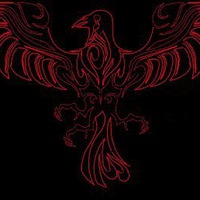
к какому древнему государству относятся термины: иероглифы, клинопись, пурпурная краска, зиккурат,
Осирис, законы Хаммурапи, сфинкс, шадуф, первый алфавит, Иштар, Ашшурбанапал, глиняные таблички для письма, , Ниневия, стекло, мумия, Шамаш, таран. Знать и уметь показывать на карте: Египет, Финикию, Междуречье 0
0
 0
0
Ответы на вопрос
 Внимание! Ответы на вопросы дают живые люди. Они могут содержать ошибочную информацию, заблуждения, а также ответы могут быть сгенерированы нейросетями. Будьте внимательны. Если вы уверены, что ответ неверный, нажмите кнопку "Пожаловаться" под ответом.
Внимание! Ответы на вопросы дают живые люди. Они могут содержать ошибочную информацию, заблуждения, а также ответы могут быть сгенерированы нейросетями. Будьте внимательны. Если вы уверены, что ответ неверный, нажмите кнопку "Пожаловаться" под ответом.

Відповідь:
Древний Египет
Пояснення:
 0
0
 0
0

Ответ:
На первый вопрос: Египет
Древние цивилизации указанные на карте:



 0
0
 0
0

Ancient Civilizations and Associated Terms
The terms you mentioned are associated with various ancient civilizations. Let's explore each term and its corresponding civilization:
1. Ieroglyphs: Ieroglyphs are a system of writing that was used by the ancient Egyptians. This writing system used pictorial symbols to represent words and sounds. The ancient Egyptians used ieroglyphs extensively for religious texts, monumental inscriptions, and administrative documents [[1]].
2. Cuneiform: Cuneiform is a system of writing that was used by several ancient civilizations, including the Sumerians, Babylonians, and Assyrians. It is one of the earliest known writing systems and was created by making wedge-shaped marks on clay tablets using a reed stylus. Cuneiform was used for various purposes, such as recording laws, literature, and administrative documents [[2]].
3. Purple dye: The term "purpur" or "purple dye" refers to a vibrant and expensive dye that was highly valued in ancient times. It was extracted from certain species of sea snails, particularly the Murex snail. The Phoenicians, an ancient civilization centered in the region of modern-day Lebanon, were known for their production and trade of purple dye [[3]].
4. Ziggurat: A ziggurat is a type of stepped pyramid structure that was built by several ancient civilizations, including the Sumerians, Babylonians, and Assyrians. Ziggurats were religious structures and were believed to be the dwelling places of the gods. They were used for worship, rituals, and as administrative centers [[4]].
5. Osiris: Osiris is an important figure in ancient Egyptian mythology. He was the god of the afterlife, resurrection, and fertility. Osiris was believed to be the ruler of the underworld and the judge of the dead. He played a central role in the Egyptian beliefs about death and the afterlife [[5]].
6. Hammurabi's Code: Hammurabi's Code refers to a set of laws established by Hammurabi, the sixth king of the Babylonian Empire. These laws were inscribed on a stele and are one of the earliest known legal codes. Hammurabi's Code covered various aspects of life, including family law, property rights, and criminal offenses. It aimed to establish justice and maintain social order [[6]].
7. Sphinx: The Sphinx is a mythical creature with the body of a lion and the head of a human or animal. The most famous Sphinx is the Great Sphinx of
 0
0
 0
0
Похожие вопросы
Топ вопросов за вчера в категории История
Последние заданные вопросы в категории История
-
Математика
-
Литература
-
Алгебра
-
Русский язык
-
Геометрия
-
Английский язык
-
Химия
-
Физика
-
Биология
-
Другие предметы
-
История
-
Обществознание
-
Окружающий мир
-
География
-
Українська мова
-
Информатика
-
Українська література
-
Қазақ тiлi
-
Экономика
-
Музыка
-
Право
-
Беларуская мова
-
Французский язык
-
Немецкий язык
-
МХК
-
ОБЖ
-
Психология
-
Физкультура и спорт
-
Астрономия
-
Кыргыз тили
-
Оʻzbek tili


























